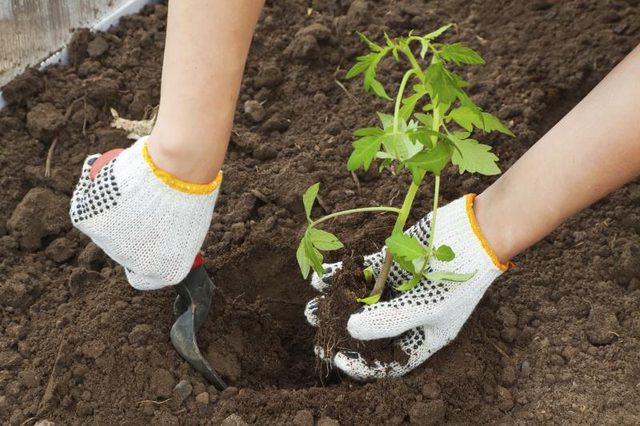Bulbs
Flower Basics
Flower Beds & Specialty Gardens
Flower Garden
Garden Furniture
Garden Gnomes
Garden Seeds
Garden Sheds
Garden Statues
Garden Tools & Supplies
Gardening Basics
Green & Organic
Groundcovers & Vines
Growing Annuals
Growing Basil
Growing Beans
Growing Berries
Growing Blueberries
Growing Cactus
Growing Corn
Growing Cotton
Growing Edibles
Growing Flowers
Growing Garlic
Growing Grapes
Growing Grass
Growing Herbs
Growing Jasmine
Growing Mint
Growing Mushrooms
Orchids
Growing Peanuts
Growing Perennials
Growing Plants
Growing Rosemary
Growing Roses
Growing Strawberries
Growing Sunflowers
Growing Thyme
Growing Tomatoes
Growing Tulips
Growing Vegetables
Herb Basics
Herb Garden
Indoor Growing
Landscaping Basics
Landscaping Patios
Landscaping Plants
Landscaping Shrubs
Landscaping Trees
Landscaping Walks & Pathways
Lawn Basics
Lawn Maintenance
Lawn Mowers
Lawn Ornaments
Lawn Planting
Lawn Tools
Outdoor Growing
Overall Landscape Planning
Pests, Weeds & Problems
Plant Basics
Rock Garden
Rose Garden
Shrubs
Soil
Specialty Gardens
Trees
Vegetable Garden
Yard Maintenance
When to Plant Tomatoes in Colorado
When to Plant Tomatoes in Colorado. Tomatoes (Solanum lycopersicum) are an annual in Colorado, where U.S. Department of Agriculture plant hardiness zones range from 3 to 7, though they're technically perennial in USDA zone 12. Tomatoes require special care in Colorado. Tomatoes do not tolerate freezing temperatures at all and will not set fruit or...

Tomatoes (Solanum lycopersicum) are an annual in Colorado, where U.S. Department of Agriculture plant hardiness zones range from 3 to 7, though they're technically perennial in USDA zone 12. Tomatoes require special care in Colorado. Tomatoes do not tolerate freezing temperatures at all and will not set fruit or thrive below 55 degrees Fahrenheit. In warmer regions of Colorado, plant tomatoes outdoors in late May. Planting along a southern wall or providing some form of protection will help your tomatoes thrive.
Colorado Frost Dates
Latest spring frost dates in Colorado range from late May in the warmest parts of the Western Slope, Front Range and eastern plains through early to mid-June in these regions. Across the central mountains of Colorado, the latest spring frost may be as late as mid-July. The areas with later frost dates have a shorter growing season, and it may be more practical to grow tomatoes there in a greenhouse or cold frame. Monitor overnight temperatures even inside a greenhouse, and be prepared to cover tomato plants whenever the temperature is predicted to reach freezing.
Planting Tomato Seed
To grow tomatoes from seed in Colorado, you must start by planting indoors six to eight weeks before the last freeze date. Along the Front Range and Western Slope, this means starting seed in mid-March for transplanting outdoors. In cooler mountainous regions, you can also start seed indoors around March if you plan to transplant the tomatoes to a greenhouse. Seeds germinate best with bottom heat and temperatures of 75 to 80 degrees Fahrenheit. As the seedlings grow, transplant them to larger pots, burying as much of the stem as possible below the lowest leaves. The young plants may require artificial light to grow uniformly; place the light as close to the plants as possible to prevent spindly stalks.
Preparing to Transplant
Harden off seedlings by moving them outdoors for gradually increased periods of time before planting outside. Begin with 10 to 30 minutes, and increase over a few weeks to a few hours per day. Light breezes will help the plants grow stronger, but strong winds will stress them. Leggy plants are more susceptible to breaking from strong breezes or while moving them.
This is also a good time to ensure the final planting bed contains soil that will enable the tomato plants to thrive. Colorado's clay soils require amendments to create the proper texture and provide nutrients. Till in compost or composted manure at least a few weeks before planting to aerate the soil and add phosphorous and nitrogen. Compost should be crumbly with no recognizable matter so it does not overheat the soil. Raised beds make it easier to manage the soil composition, but may dry out more quickly.
When to Plant
Transplant tomato plants when the soil and air temperatures have warmed to 60 degrees Fahrenheit. Along Colorado’s Front Range and Western Slope, this is usually in mid- to late May. In mountainous areas, you can plant tomatoes in a greenhouse in April to May. Weather in the mountains is especially unpredictable, and tomatoes require protection if the temperature drops to 32 F. Because the earlier ripening varieties require at least 50 days to mature and the first fall frost date in areas with a short growing season can be early to mid-September, plant tomatoes with enough time for the fruit to ripen. Greenhouses also need to be ventilated or cooled, as prolonged temperatures over 90 F may cause the blossoms to abort before setting fruit.
Black plastic helps to warm the soil, and plastic wrapped around tomato cages or other supports protects the tender plants from drying winds and cool temperatures. You can also protect the young plants with plastic or glass cloches or other season extenders. Space tomatoes about 2 feet apart and support them with trellises or cages.